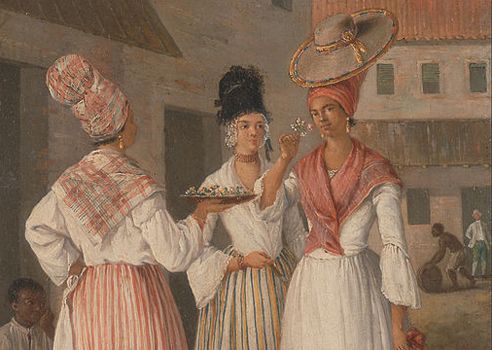Reading time: Less than 1 minute
Increase your vocabulary and you’ll make your writing much more precise. That’s why I provide a word of the week. Today’s word: tignon…
If you had said the word tignon to me, I wouldn’t have been able to guess its meaning. But, encountering it in the book Up From Freedom by Wayne Grady, I was able to figure it out via context. Here is how Grady used it:
The consequences for [Annie] were far greater than they were for him, even in New Orleans, but she’d gone along with it, wore her tignons and scarves and walked beside him as if her arm were in his, as if she were his fancy lady.
The Annie named is a black slave who has been “removed” from slavery by a white man. But as she points out to this man, she is still enslaved by society.
As I guessed, a tignon is a type of headcovering that forms a kind of turban, similar to the ones shown in the image at the top of this post, from a painting by Agostino Brunias, “A West Indian Flower Girl and Two other Free Women of Color.”
Interestingly, the tignon was the result of laws passed in 1786 under the administration of the governor of Louisiana and Florida. Women of African descent would often adorn their hair with jewelry and beads giving them an “exotic” appearance that white women found threatening. The law, which prescribed they should cover their hair and heads with a knotted headdress, was used to maintain class distinctions.
The word is of French origin, meaning “coil of hair.”
An earlier version of this post first appeared on my blog on Oct 10/18.


